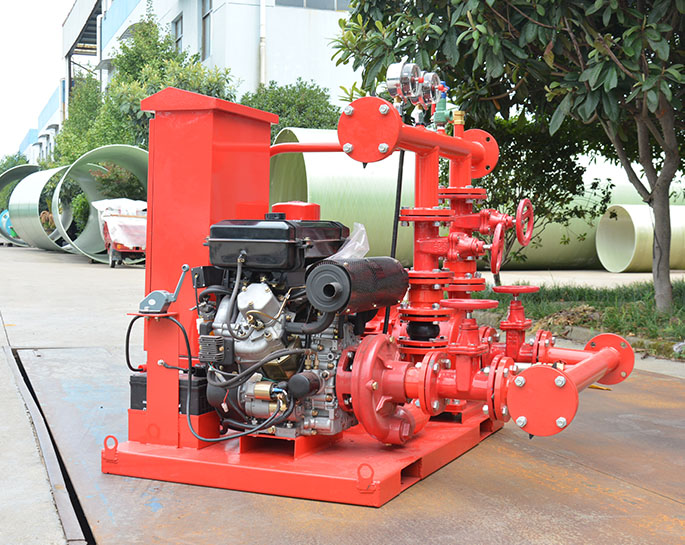Fire pump maintenance
Regular maintenance of fire pumps is crucial to ensure their reliable performance during emergencies. Here are some key maintenance tasks for fire pumps:
-
Follow manufacturer guidelines: Refer to the manufacturer's manual or documentation for specific maintenance requirements and schedules for your fire pump model. Manufacturers often provide detailed instructions for maintenance procedures.
-
Inspect regularly: Conduct regular visual inspections of the fire pump, including the motor, control panel, and associated components. Look for signs of wear, damage, leaks, or loose connections.
-
Test performance: Periodically test the performance of the fire pump to ensure it meets the required specifications. This includes flow tests, pressure tests, and functional tests of alarms and controls. Follow local regulations and standards for testing frequencies.
-
Lubrication: Proper lubrication is essential for the smooth operation of the fire pump. Follow the manufacturer's recommendations for lubrication intervals and use the recommended type of lubricant.
-
Check and clean suction strainer: Inspect and clean the suction strainer or screen regularly to prevent clogging and ensure proper water intake. Remove any debris, sediment, or other obstructions that may affect pump performance.
-
Verify suction and discharge valves: Check the operation of suction and discharge valves to ensure they are fully open and not stuck or blocked. Repair or replace any faulty valves.
-
Test and maintain batteries: If your fire pump relies on batteries for backup power, regularly test and maintain them according to manufacturer recommendations. This includes checking battery voltage, replacing expired batteries, and ensuring proper charging.
-
Inspect and clean cooling system: If the fire pump has a cooling system, such as a radiator or heat exchanger, inspect it regularly for cleanliness and proper functioning. Clean or replace filters as needed.
-
Monitor vibrations and noise: Pay attention to any unusual vibrations or noise coming from the fire pump during operation. Excessive vibrations or abnormal sounds may indicate a problem that needs attention.
-
Keep records: Maintain accurate records of all maintenance activities, including inspections, tests, repairs, and replacements. This documentation can help track the pump's performance, identify recurring issues, and ensure compliance with regulations.
-
Professional servicing: Schedule periodic maintenance visits from qualified technicians or fire pump service providers. They can conduct more in-depth inspections, perform specialized tests, and address any complex issues.
Remember, it's important to adhere to local regulations, industry standards, and the manufacturer's guidelines for fire pump maintenance. This will help ensure the pump's reliability and compliance with safety requirements.


.png)
.png)

.png)


